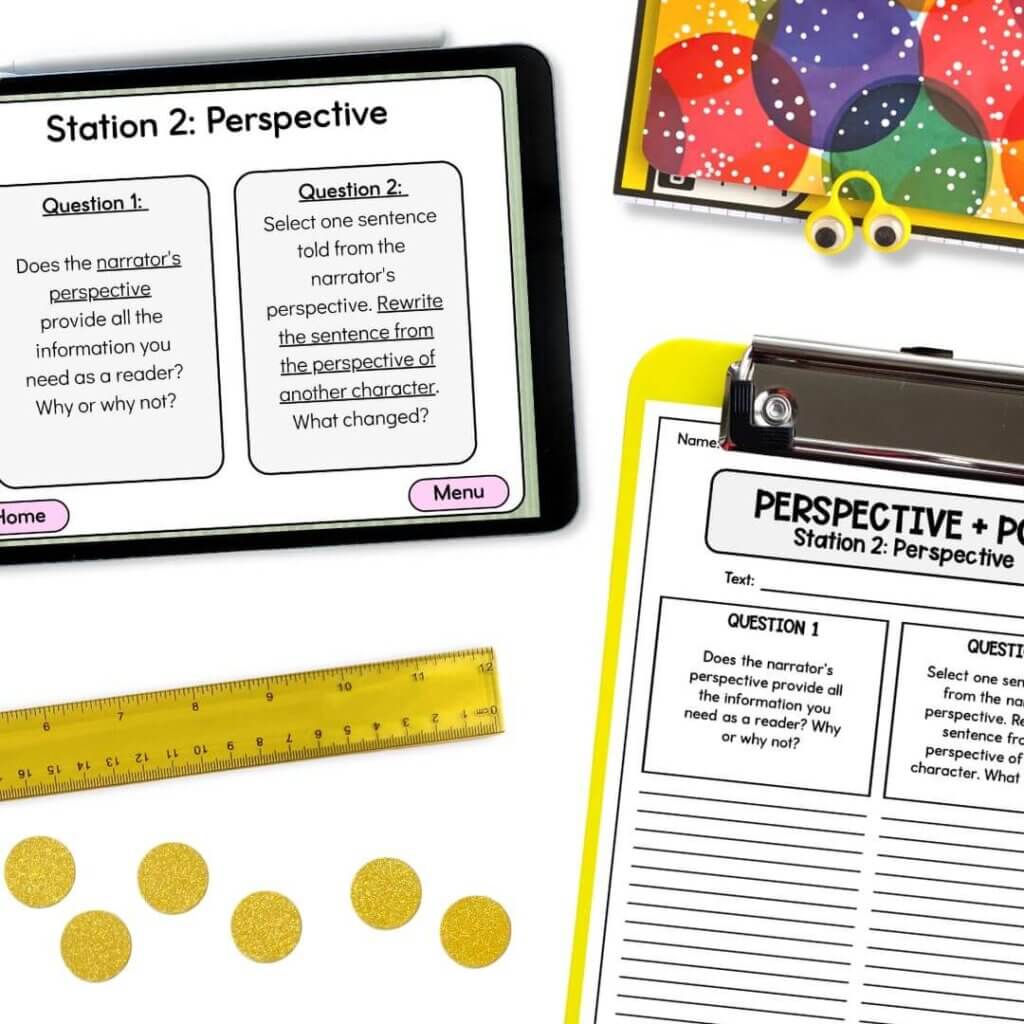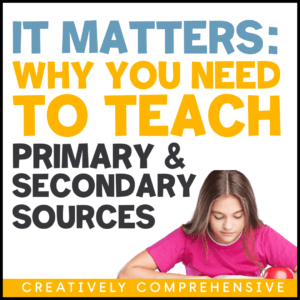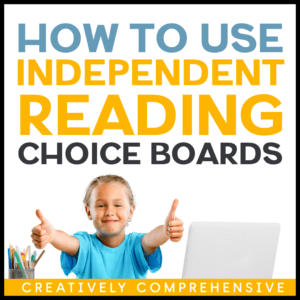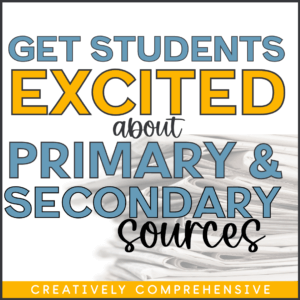How to Get Students to Really Understand Perspective and Point of View
A guide to this tricky literary standard
If you’re having heart palpitations about your students being asked to distinguish between perspective and point of view on an assessment, you are not alone! This is difficult for most adults to understand, let alone students who have just started their journey with reading comprehension. Fortunately, I’ve got a few ideas that may help! Keep reading below for a perspective/POV “cheat sheet” as well as some resources and activities that you can use for this tricky standard.
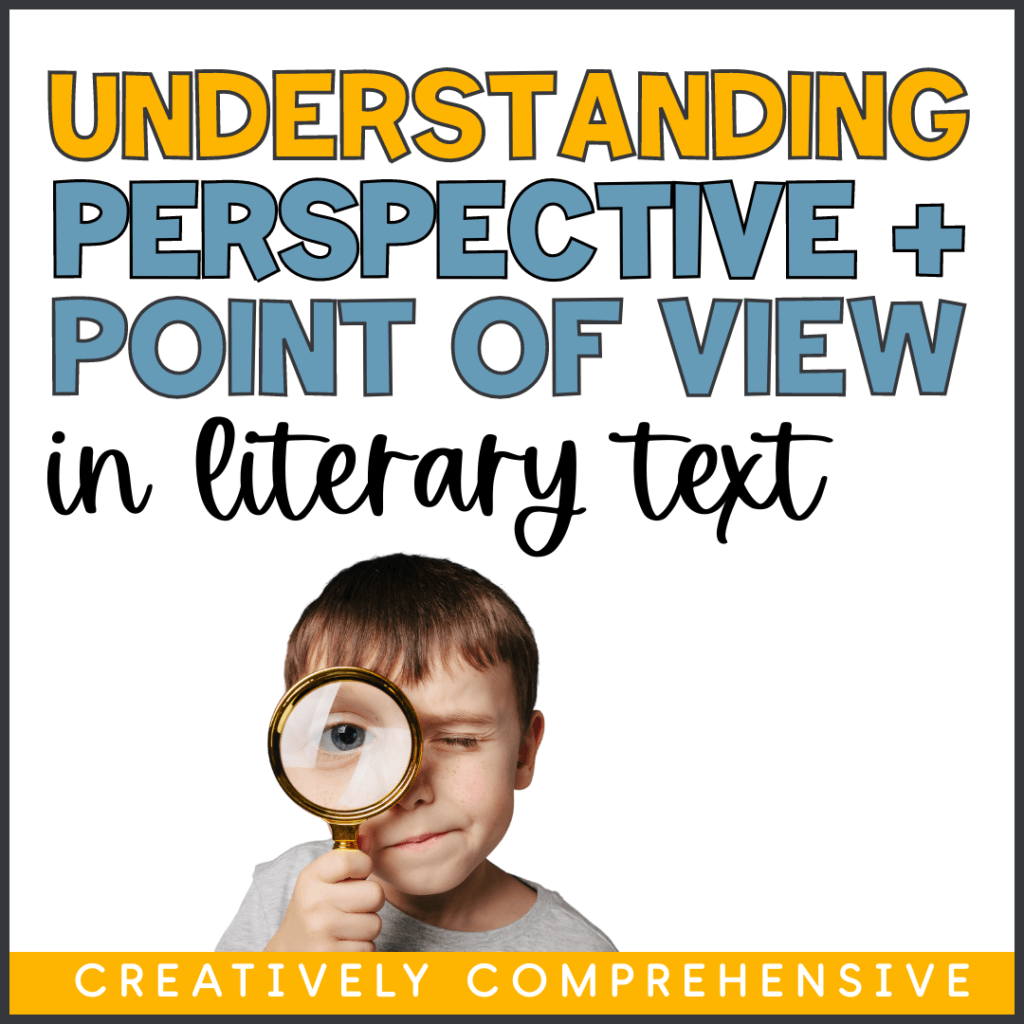
Already taught this skill, looking for ways to demonstrate student understanding? Check out my Perspective and Point of View Comprehension Stations, designed specifically for to address Florida BEST Standards!
It’s easy to confuse these two terms, so let’s start with a working definition of each:
Perspective – This is the lens through how any character in a literary text views the world. Each character’s perspective is shaped by their feelings and experiences.
Point of View – POV refers to who is telling the story. The point of view could be a character in the story, or an outside observer.
When discussing point-of-view, the term “narrator” is used to describe the character telling the story.
Here are some common POVs- found in upper elementary texts:
- 1st person- told from the perspective of a character in the story, using the pronouns “I,” “we,” and “us,” among others.
- 3rd person limited- told from the perspective of a person outside the story, who only has access to one character’s thoughts and feelings.
- 3rd person omniscient- told from the perspective of an “all-knowing” source outside of the story. The narrator has access to every character’s inner and outer feelings.
What Upper Elementary Students Need to Know
*Note: this section references the Florida BEST standards, but is applicable for teaching ELA to upper elementary grades anywhere!
In 3rd grade, the standard focuses on explaining different characters’ perspectives in a literary text. Point of view is only referred to in terms of who the narrator of the story is.
4th graders will “identify the narrator’s point of view and explain the difference between a narrator’s point of view and character perspective in a literary text.”
In 5th grade, students move toward describing how the author develops a character’s perspective throughout a literary text.
ELA teachers, this is a tall order! But we can handle it. Here are a few activities that will help clarify the difference between perspective and point of view for our learners:
Chart It Out
For this activity* I would recommend the book, “They All Saw a Cat” by Brendan Wenzel. As you read the story, list characters and their perspectives in one column and the narrator’s point of view in the other. What you want students to notice is that the perspectives change while the point of view (3rd person) stays the same. Then, repeat t his activity on another day with a book where the POV may change.
Dear Diary
Grab a favorite picture book that uses multiple perspectives ( such as “Voices in the Park” by Anthony Browne). Have students continue the story of one of the characters in the book as a diary entry, or from the perspective of a character that is not heard from in the book (for example, with “Voices” students could write from the perspective of the dogs).
This is a great activity to do with “twisted” fairy tales. Students will be familiar with the plots of these classic stories, so they will be quick to note the change in perspective!
Perspective Detective
One of my favorite class purchases of all time was a set of magnifying glasses. I mean really, what sounds more enticing than “Let’s be Perspective Detectives!” Use a favorite read aloud or chapter book for this activity. You can read the text out loud and have students hold up their magnifying glasses each time a new perspective is mentioned. Or, provide students with a text selection to read with their magnifying glass, underlining different perspectives in different colors!
Dig Deeper with Perspective and Point of View
Ready for your students to take a deep dive into the world of perspective and point of view? My comprehension stations offer 6 thought-provoking rotations, based directly on the language of the FL BEST standards! With digital and printable options and multiple ways to use, you’re sure to find a way to use this with your upper elementary learners!
This post may contain affiliate links and I may earn a small commission when you click on the links at no cost to you. As an Amazon Associate, I may earn commissions from qualifying purchases on Amazon.com.




